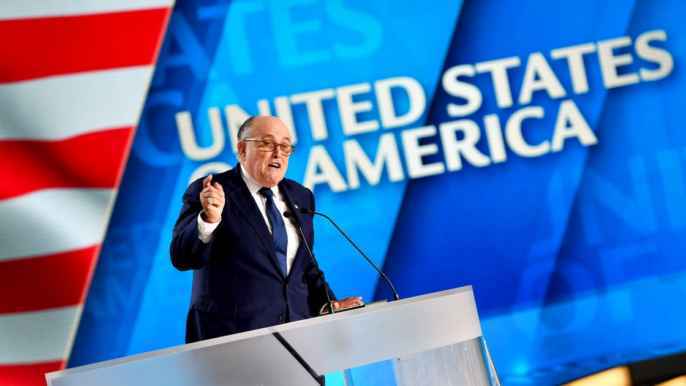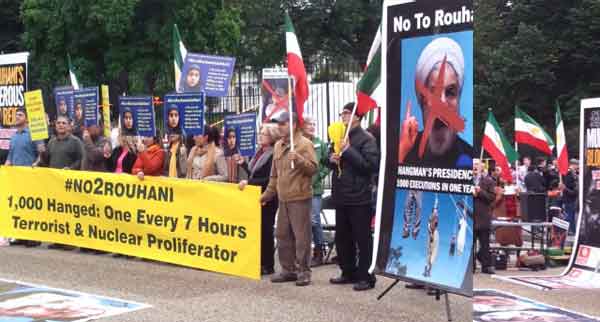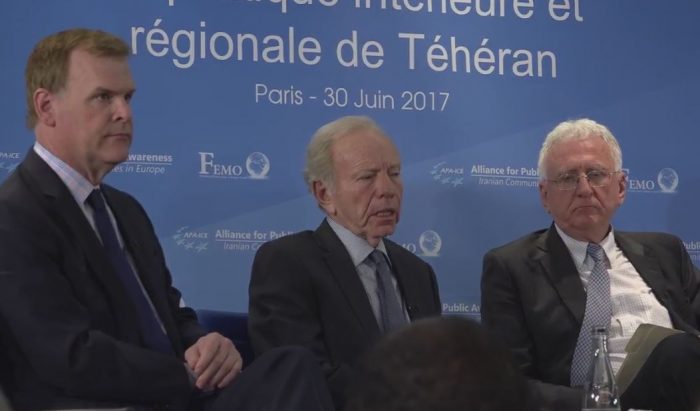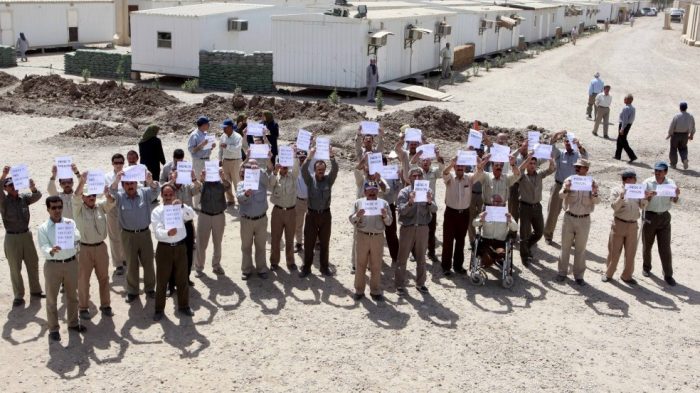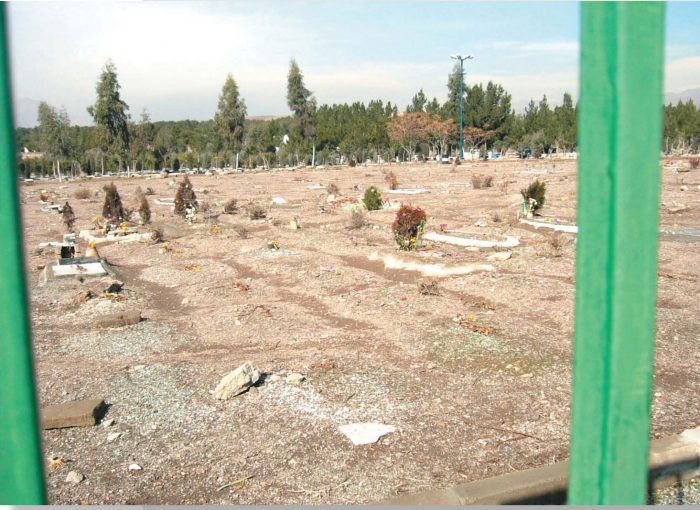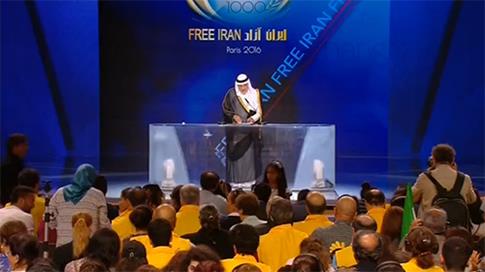All Iranian Dissident Groups are Targeted by the Iran Regime
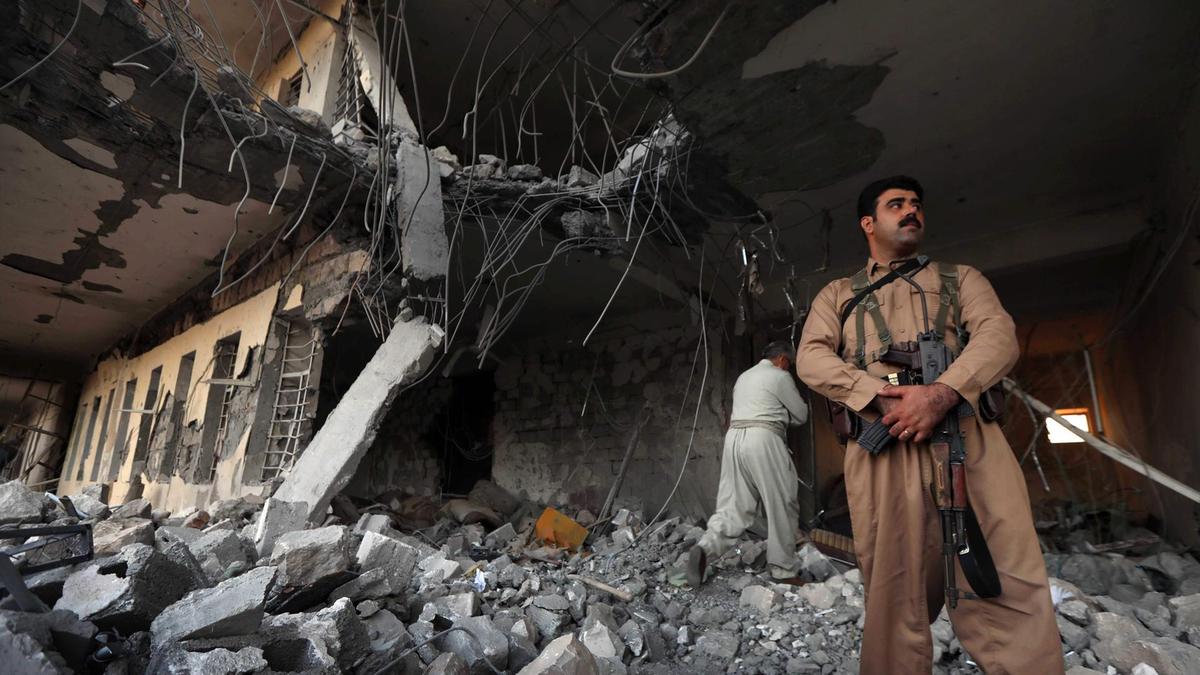
If there is one constant about the theocracy controlling Iran, it’s the fact they cannot tolerate dissent or protest of any kind.
The legitimacy of most governments on this planet tends towards the democratic side with free and open elections. Sometimes there’s a monarchy, but it’s a constitutional one restrained by a parliament. But there are a few countries out there that still adhere to the authoritarian model where elections are rigged, competing political parties are banned and membership or active participation in dissident activities can get you tossed in jail or worse, executed.
Iran happens to be one of the latter types of state. Ever since the mullahs stole the revolution toppling the shah and turned Iran into a medieval, sectarian state, they have zealously gone after any form of dissent and sought to stamp it out.
The history of the Mujahideen-e-Khalq (MEK) is one example. It stands as the longest-running opposition group among the Iranian diaspora and has worked relentlessly to oppose the mullahs by revealing the depths of human rights violations within Iran, uncovering the secret nuclear program there, and smuggling out videos and reports of oppression and protests inside the Islamic state.
For all its efforts, the mullahs have made the MEK enemy number one and have sought to attack them physically with military strikes at MEK refugee camps in Iraq and a recent attempt to bomb an annual gathering in Paris by Iranian agents.
The regime has sought to nullify the MEK’s effectiveness politically by first getting it ironically labeled as a terrorist organization by the U.S. only to finally get itself removed by the Obama administration, and then it aimed its lobbying and PR operation at trying to vilify the resistance movement with various canards such as it lacks any support within Iran.
It would be hard to label anything coming from the Iranian lobbying machine as truthful since the mullahs have tried their hardest to kill, imprison or hang every MEK member they could get their hands on.
But the MEK is not the only opposition group getting targeted as the mullahs turned their attention to the Democratic Party of Iranian Kurdistan (PDKI), an armed opposition group fighting for greater autonomy for Iran’s Kurdish community, with an attack on a base in northern Iraq, killing at least 11 people and wounding scores more according to Reuters.
The PDKI tweeted pictures and video of explosions, as well as of the wounded, at its headquarters in Koya, in Iraq’s semi-autonomous Kurdistan region.
“According to initial reports, 11 people were killed and between 20 and 30 wounded,” said Major General Jabbar Yawar, a spokesman for Iraq’s Kurdish Peshmerga security forces.
Yawar said the area that had been attacked included a residential complex for the families of party members.
The attack represents the same pattern used by the Iranian regime to strike at opponents anywhere outside of its borders. It showed no compunction about assassinating MEK members in Iraq and Europe and certainly has no regard in striking at PDKI members in Iraq.
It further demonstrates that for all the talk of moderation voiced by Iran lobby members such as the National Iranian American Council, the Iranian regime is steadfastly committed to using violence to achieve its goals, even if it means regularly violating the territorial sovereignty of another country.
The United Nations Assistance Mission for Iraq (UNAMI) on Sunday urged the Iranian government to respect Iraq’s sovereignty following the attack. Iraq’s Foreign Ministry labeled Iran’s bombardment of the Kurdistan Region’s town of Koya as a violation of the country’s sovereignty.
This heightened focus on flexing its military muscle was showcased by top mullah Ali Khamenei who urged Iran’s armed forces this weekend to increase their power to “scare off” the enemy; presumably the U.S. His speech came before the attack on the PDKI to a graduation ceremony for Iranian regime’s army cadets.
State television also showed Khamenei praising the Iranian regime’s naval forces in the Gulf of Aden, off the coast of Yemen, while speaking to their commander via video, according to Reuters.
Meanwhile, the U.S. Navy conducted exercises this month to ensure its readiness to guarantee freedom of movement through the Persian Gulf and the Red Sea waterways amid escalating threats from Iran to disrupt shipping across important choke points.
The laundry list of militancy from the regime ruling Iran doesn’t stop there as it announced the completion of a new facility to build advanced centrifuges to expand its uranium-enrichment capacity.
Ali Akbar Salehi, the head of the Atomic Energy Organization of Iran, said the facility at the Natanz nuclear plant would be completed within a month.
On Sunday, the official news agency IRNA quoted Salehi as saying: “(Ayatollah Khamenei) had ordered us to set up and complete a very advanced hall for the construction of modern centrifuges, and this hall has now been fully equipped and set up.”
The development represents one of the key flaws in the Iran nuclear deal which allowed Iran to develop and operate advanced centrifuges far superior to what it was using before and that with little effort could be made to operate in producing weapons grade nuclear materials.
The last indicator of just how unserious the Iran regime is about diplomacy came in remarks by Hassan Rouhani stating that the regime receives a constant stream of messages from the U.S. to restart diplomatic negotiations.
But Rouhani criticized the overtures and did not commit to starting any diplomatic dialogue; a far cry from the promises made by the NIAC that diplomacy was the only sure pathway to peace for the U.S. and Iran.
Laura Carnahan
Suspected Iran Regime Agents Arrested Prove Claims of Iran Lobby Are False
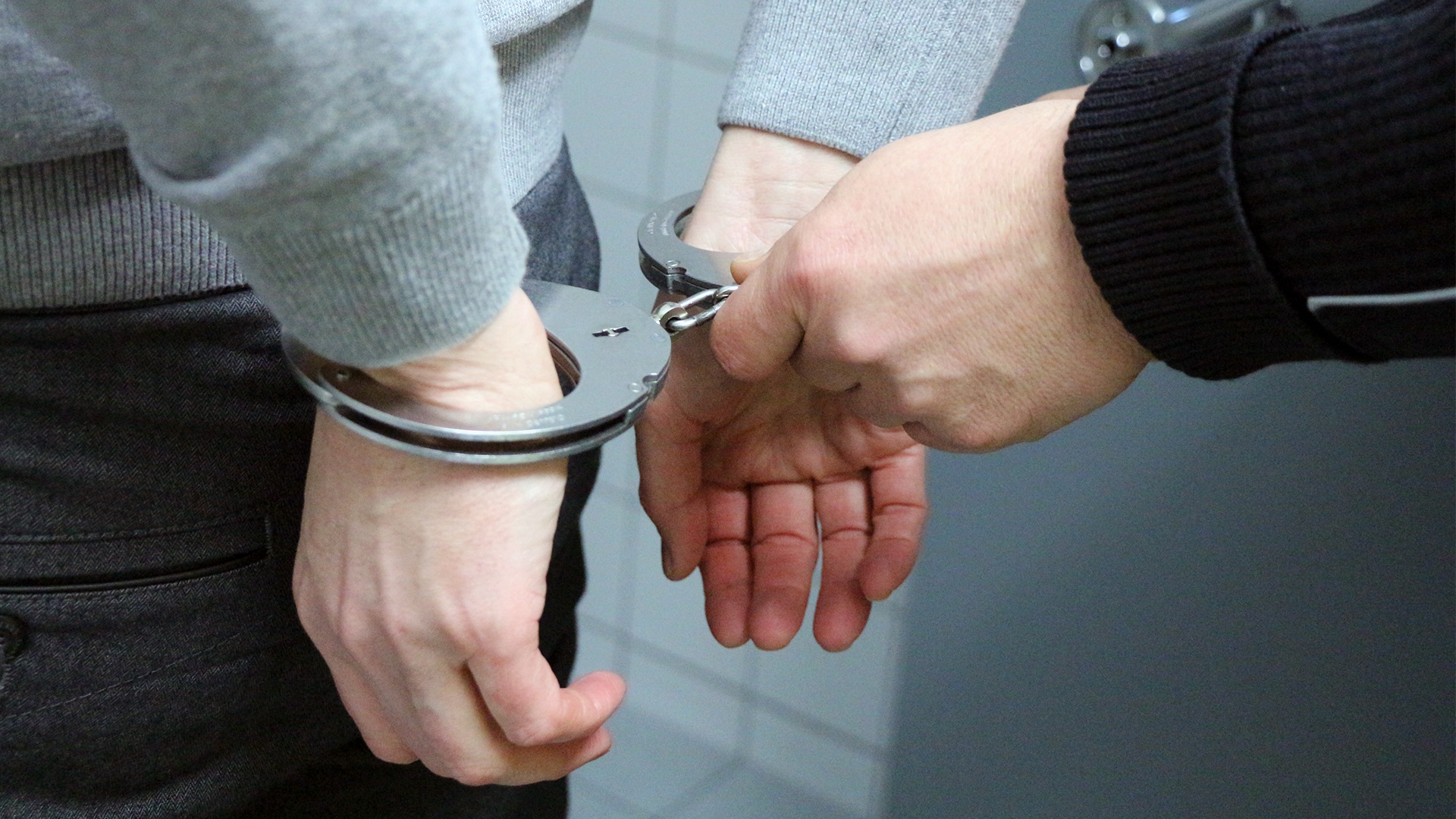
One of the more memorable claims made constantly by the Iran lobby during negotiations over the Iran nuclear deal two years ago was that its passage would embolden moderate forces within the regime government and nudge it to a more stabilizing influence in the region and world.
We now know how utterly wrong that promise was since the deal was approved, but more importantly, the agreement emboldened – not moderate influences within the regime – but the hardcore sentiments of the mullahs controlling the regime to crack down even harder on dissent at home and abroad.
Chief among those dissenters were those amongst the Iranian diaspora around the world actively working to promote democracy and freedom within Iran, especially anyone associated with the Mujahideen-e Khalq (MEK), the oldest and largest of the Iranian dissident groups abroad.
The MEK has been a particularly annoying thorn in the side of the mullahs since it has helped break closely-held secrets of the regime such as the existence of its then-clandestine nuclear program.
The MEK has also been a conduit for videos, photos and news from within Iran smuggled out to give the world a glimpse of the atrocities committed by the regime such as gruesome public hangings, as well as protests and demonstrations by Iranians against the government both large and small, including the most recent waves of protests stemming from deep dissatisfaction over the faltering economy.
For the mullahs, the mere existence of an organized and global resistance movement comprised of Iranians is galling and worrisome since it shows how the regime’s rule is neither benevolent, nor popular.
The threat posed by groups such as the MEK is such that the regime has waged a secret war against its members including launching attacks on refugee camps in Iraq housing MEK members resulting in the massacres of MEK members in an effort to eradicate the resistance movement.
As pressure has mounted on the Iran regime because of its floundering economy and death spiral in the value of its currency, the mullahs have grown increasingly desperate to strike at its perceived mortal enemies; their fellow Iranians.
Last July, Belgium authorities arrested an Iranian couple and charged them with an “attempt at terrorist murder and preparing a terrorist crime” in a planned bombing attack on an Iranian freedom gathering in Paris with the MEK as one of its chief participants.
Additionally, German authorities arrested an Iranian diplomat from Vienna who was implicated in providing support and assistance to the couple in planning the attack.
Now we have news that U.S. prosecutors announced charges Monday against two men arrested Aug. 9 and accused of acting as agents of the government of Iran, covertly monitoring a Jewish center in Chicago and American members of the MEK on behalf of the Iranian regime government.
Criminal complaints against Ahmadreza Mohammadi Doostdar, 38, a dual U.S.-Iranian citizen, and Majid Ghorbani, 59, an Iranian citizen and resident of California, were unsealed after an indictment was returned Monday in the District of Columbia, according to the U.S. Justice Department and U.S. attorney’s office of the District.
“Doostdar and Ghorbani are alleged to have acted on behalf of Iran, including by conducting surveillance of political opponents and engaging in other activities that could put Americans at risk,” Assistant Attorney General for National Security John Demers said in a statement.
“This alleged activity demonstrates a continued interest in targeting the United States, as well as potential opposition groups located in the United States,” namely the Mujahideen-e Khalq (MEK) or People’s Mujahedin of Iran, said Michael McGarrity, acting executive assistant director of the FBI’s national security branch.
Doostdar and Ghorbani were charged with acting as agents of Iran, violating U.S. sanctions and conspiracy. The charges carry maximum statutory penalties of 10 years, 20 years and five years in prison, respectively, according to the Washington Post.
The Justice Department alleged that Ghorbani took pictures of participants at a MEK rally in New York last September and that Doostdar paid him $2,000 in cash for the photos during a meeting in Los Angeles later.
He later attended another MEK rally in Washington, DC in which he “appeared to photograph certain speakers and attendees, which included delegations from across the United States.”
The photographing of MEK participants is disturbing since the Iranian regime has already acted in the past to try and assassinate and kill its members. It also raises the specter that the regime is attempting to identify MEK members who may have relatives living in Iran who could be arrested and imprisoned in order to put pressure on the MEK.
The hardball tactics are nothing new to the regime and its intelligence services, especially its Ministry of Intelligence which has led the charge against the MEK for decades.
It also was not surprising to find the Iran lobby completely silent on the matter with no mention from the National Iranian American Council or any other Iran supporters about the purported surveillance operation being conducted by the Iranian government on U.S. soil.
The regime has also stepped up its practice of arresting dual-national citizens, especially from the U.S., Canada and Europe to use as political pawns, as well as arrest scores of Iranian citizens caught protesting the regime or simply acting contrary to its medieval sensibilities.
These actions though once again are proof that the MEK is a singular threat to the regime’s continued existence and one that is gaining strength with the protest movement within Iran.
Why Does the Iran Lobby Obsess About the MEK?

Maryam Rajavi, President-elect of Iran’s main opposition, the National Council of Resistance of Iran(NCRI), speaks during the Free Iran 2018 gathering in Paris-july 2018
In the scope of issues facing Iranian-Americans today related to their homeland, you would think the Iran lobby would have better things to do than publicly trash Iranian dissident and opposition groups on a near-daily basis.
The Iran lobby, especially the National Iranian American Council and a variety of bloggers sympathetic to the Iranian regime, have recently stepped up the vitriol considering widening and near constant protests and demonstrations that have rocked the regime’s grip on power.
What is interesting is that almost all the groups making up the Iran lobby are using nearly identical language focused on trying to disprove the idea that the Mujahedeen-e-Khalq(MEK), one of the largest and oldest Iranian dissident groups, has any support within Iran.
For example, Nahal Toosi, a foreign affairs correspondent at POLITICO, writes in a piece about the Trump administration’s efforts to support regime change in Iran, that:
“One Iranian diaspora faction that has supported many Trump policies is the Mujahedeen-e-Khalq, a group with leftist roots that the U.S. previously listed as a terrorist outfit. But the MEK has few backers in Iran, even though it has major defenders among Trump’s aides and confidants. Among those who’ve spoken at MEK, events are Trump’s national security adviser, John Bolton.”
Notably, she mentions that the NIAC is being excluded from a meeting between Secretary of State Mike Pompeo and members of the Iranian-American community at the Ronald Reagan Presidential Library in Simi Valley, California this weekend, but neglects to mention the NIAC’s deep ties to Iranian regime leaders.
Against the backdrop of hot national debate over the Russian government’s use of third-parties to infiltrate American organizations such as the National Rifle Association to affect U.S. policy, the lack of any investigation or focus on the NIAC’s efforts to do the same thing with the backing of the Iranian government is hypocritical to say the least.
Mahsa Rouhi, a research fellow with the nonproliferation and nuclear policy program at the International Institute for Strategic Studies, similarly tries to belittle the MEK in a piece for Foreign Policy, writing “the MEK has no support base inside Iran; in fact, etc.”
But what both Toosi and Rouhi fail to mention are the significant contributions the MEK has made over the years in revealing the regime’s human rights abuses and uncovering its secret nuclear program; none of which could be accomplished without the support and help of Iranians living within Iran who smuggled out clandestine photos and video.
These are not the acts of a few lone dissenters, but rather a strong, clear and forceful expression of the willingness of Iranians to cooperate and help the MEK over the years even though the regime has worked obsessively hard at criminalizing any cooperation with the MEK punishable by imprisonment or even death.
It is hard to credit the Iran lobby with any factual data pointing to zero support within Iran for the MEK given its long history of organizing protests from large-scale mass demonstrations to small, individual acts of defiance such as hanging a banner praising dissident leader Mrs. Maryam Rajavi, the acting president of the National Council of Resistance of Iran, over a Tehran overpass to standing atop a box waving a hijab in defiance of morality codes.
Even top mullah Ali Khamenei has been forced to give several speeches recently to denounce the MEK as he recognizes the group’s growing influence on the protests rocking the country; at last count over 142 cities has experienced protests despite massive security crackdowns by the regime.
It’s noteworthy that the Iran lobby discounts the similarities between Iran and other despotic regimes such as North Korea, Cuba and even the old Soviet Union, in which compulsory voting often delivered election “mandates” for the government, but never reflected the true feelings of the population.
Similarly, Iran discounts any support for the MEK when it actively bans its participation in any elections and refuses to allow any of its members to run for elected office. It is doubtful that Toosi or Rouhi can even justify denying a group such as the MEK a chance at the polls to settle the question once and for all about who the Iranian people back to lead them into democracy and freedom.
Most disturbing and yet telling has been the recent arrests of an Iranian diplomat and other agents accused to attempting to plant a 500-gram bomb at an annual gathering of the MEK and other resistance groups outside of Paris last month.
The captured explosive was comprised of TATP, a favorite explosive for terrorists because it is easily prepared from readily available retail ingredients, such as hair bleach and nail polish remover. It is also able to evade detection because it is one of the few high explosives that do not contain nitrogen and can, therefore, pass undetected through traditional explosive detection scanners designed to detect nitrogenous explosives.
TATP has been used in bomb and suicide attacks and in improvised explosive devices, including the London bombings on 7 July 2005, where four suicide bombers killed 52 people and injured more than 700. It was one of the explosives used by the “shoe bomber” Richard Reid in his 2001 failed shoe bomb attempt and was used by the suicide bombers in the November 2015 Paris attacks, 2016 Brussels bombings, Manchester Arena bombing and June 2017 Brussels attack.
The arrest in Germany of Asadollah Assadi, a diplomat at the Iranian embassy in Vienna who – in his capacity as an operative for the Iranian Ministry of Intelligence and Security (MOIS) – provided the explosives, draws a clear line from the Iranian regime to efforts to destroy the MEK.
Had the terror plot been successful there is no telling what toll it would have taken on the gathering of roughly 100,000 supporters of the NCRI. In addition to Iranian expatriates and NCRI officials, the event included participation and speeches by hundreds of political dignitaries from throughout the world – including prominent American and European politicians representing multiple political parties.
It’s unfortunate the Iran lobby doesn’t talk about those potential lives lost.
Iran Regime Plot to Attack Resistance Gathering Foiled
Outside of Paris, France, tens of thousands of Iranians gathered to protest the Iranian regime and demonstrate for the peaceful transition to a free and democratic Iran unshackled from the control of the ruling mullahs.
Amid the sea of flags and enthusiastic supporters was the optimistic feeling that the moment was fast approaching where that transition could finally happen as Iran is rocked with mass protests that have so far spread to over 140 cities, towns and villages and represent the most serious threat to theocratic rule in the Islamic state’s history.
Those protests have been fueled by a faltering economy including a near-death spiral in the value of the rial which ballooned to over 90,000 rial to a single U.S. dollar; doubling in only a few months.
While the regime has tried to blame President Donald Trump’s decision to pull out of the Iran nuclear deal for the economic implosion, the truth on the streets of Iran is that Iranians are pointing the finger at rampant corruption in the government and the decision to spend billions on wars in Syria and Yemen that have only succeeded in ostracizing Iran further from the international community.
The conclusion being reached in Iran is not that the U.S. is killing the nuclear deal as much as Iranian regime’s involvement in the Syrian war and support for global terrorism is what is driving the isolation.
It is against this backdrop that the annual gathering in Paris of the Iranian opposition movement represents an almost intolerable image for Tehran; thousands of Iranians all united in supporting democratic change and being addressed by speaker after speaker including prominent members of the Trump administration, former New York mayor Rudy Giuliani who is now the president’s personal attorney.
Giuliani made a strong call to ramp up sanctions as the protests in recent months have continued spread.
“When they do that, and when these protests continue to grow and grow, this threatens to topple the regime, which means freedom is right around the corner,” he said. “This is the time to put on the real pressure. The sanctions will become greater and greater.”
Amidst that image of united opposition came the news that an Iranian diplomat was among four people arrested in connection with what Belgian authorities said was a foiled bombing attack targeting the rally.
Belgian authorities said an unnamed Iranian diplomat, who works for Tehran’s mission to Austria, was arrested in Germany, while a married couple – Belgian citizens of Iranian heritage – were detained with “attempt at terrorist murder and preparing a terrorist crime” against the MEK. A fourth suspect was arrested in France.
The arrests come ahead of a rare visit to Europe by the Iranian president, Hassan Rouhani, who is scrambling to salvage the 2015 nuclear deal after Trump said the US would not honor it.
A statement by the secretariat of the National Council of Resistance of Iran (NCRI), an umbrella group of the MEK, said: “The conspiracy of the terrorist dictatorship ruling Iran to attack the grand gathering of the Iranian resistance in Villepinte, Paris, was foiled.
“The mullahs’ regime’s terrorists in Belgium, helped by the regime’s diplomat terrorists, had designed for the attack.”
According to the press, the Iranian couple were in a Mercedes car when they were stopped by special forces and arrested on Saturday in Woluwe-Saint-Pierre, which is close to EU institutions in Brussels. According to Belgian media, police found 500 grams of TATP explosive and a detonator hidden in a toiletries bag.
German police arrested a 46-year-old diplomat at the Iranian embassy in Austria, whom police described as a “contact person” for the couple. And French police arrested a 54-year-old described as an accomplice. Authorities said they had monitored communications among the individuals.
A Belgian law enforcement official said investigators suspect the couple took orders from the Iranian diplomat.
Security analysts and Western officials say Iranian intelligence agencies maintain extensive networks in Europe to carry out covert operations.
The Iranian regime has a long history of mounting attacks on the various Iranian dissident groups opposing it including a publicized series of attacks on refugee camps in Iraq housing thousands of MEK members before they were finally resettled in Europe.
The bombing plot is further proof of the Iranian regime’s lack of regard for peaceful relations with the rest of the world. The fact that the plot involved agents and operatives in Germany, France and Belgian pointed out the rank hypocrisy in the supposed moderation in Rouhani’s administration and why EU policy in trying to keep the nuclear deal alive is terribly flawed.
The efforts by the regime to blunt the effectiveness of the resistance movement have included making membership by any Iranian or support for the group in any manner punishable by death. The regime has also vigorously invested time and money to fund the Iran lobby in an active effort to mount PR campaigns aimed at discrediting these groups; most notably the National Iranian American Council which has made it its mission to discredit the MEK.
This includes the creation of fake websites operated by the regime’s intelligence services and using comment boards for news organizations to disparage any positive news stories of the resistance movement.
The arrests in Belgium are noteworthy because of the rise in Islamic extremist terrorist attacks there which have been supported and encouraged by the Iranian regime.
This escalation to directly attack a peaceful rally attended by men, women and children with speakers such as Giuliani should convince any doubters of the blood thirsty intent of the mullahs in Tehran.
Michael Tomlinson
Regime Change in Iran will Come from the People
The passage of new economic sanctions against the Iranian regime and the signing of the legislation by President Donald Trump officially buried the Obama administration’s policies of trying to appease the mullahs in Tehran into trying to turn towards moderation.
The response from the Iran lobby was predictable with dire warnings of war and destruction being pedaled, but the reality is that the regime change being sought by the U.S. is not the regime change the Iran lobby is trying to portray.
One of the great misconceptions about the idea of regime change is that it must come about violently and it would be externally driven by outside forces such as the U.S. scheming to plot the overthrow of the mullahs by some armed insurrection or brutal invasion.
It serves the purposes of regime supporters such as Trita Parsi of the National Iranian American Council to push the narrative that President Trump is itching for a war with Iran.
The reality though is much different. The president campaigned strongly on the platform that the Iraq invasion by the Bush administration was a mistake and worse yet, not planning for its aftermath was blunder.
Most historians would not find fault with that appraisal and apparently not many American voters did either. It would be ironic then for a president—who campaigned against more wars in the Middle East—to start of his administration with seeking to instigate a war with the region’s largest army in Iran.
Then again, logic was never a strong suit for regime advocates such as Parsi, which is why we see his messages for what they are: diversions.
There are efforts to divert attention from the real concerns the mullahs have and are constantly battling against which is the potential for their rule to end because of the desire of the Iranian people to want change.
History has proven that all dictatorial regimes fail eventually. No government can stand against the entropy that occurs by suppressing basic human rights, using fear as a means of intimidation and control, and world events that reshape the region around a regime.
More recently, the Arab Spring protests toppled firmly established autocratic governments throughout the Mediterranean and reshaped the Middle East radically and it did so without the violence of bloody revolution that accompanied the Iranian revolution for example in 1979.
Even the more recent election demonstrations of 2009 showed the Iranian regime clearly that the Iranian people were more than capable of toppling their reign and it probably scared them to death and like any reactionary totalitarian regime, the mullahs did what came naturally for them: they cracked down even harder.
They rigged the election for Hassan Rouhani in 2013 by clearing the field of any other candidates. The did the same thing during parliamentary elections, keeping control with an overwhelming majority of loyalists.
They arrested journalists, stepped up attacks on dissidents, seized satellite dishes, banned social media, imprisoned students and artists and expanded the size and reach of “morality” police forces to enforce order.
Under Rouhani’s first time, the use of the death penalty skyrocketed to all-time highs as gallows and cranes were busy throughout public squares in Iran hanging Iranian men, women and even youngsters.
Even under this onslaught, protests still flourished in Iran with Rouhani’s re-election earlier this year in which he was greeted by masses of protesters at some campaign stops that turned ugly. Regime change in Iran won’t come at the point of an American invasion. It will come from the shouts and marches of millions of Iranians in city streets throughout the country.
Which is why the imposition of sanctions by the Trump administration is an opening step to making regime change possible; not through the threat of war as the Iran lobby would you believe, but rather in the reapplication of pressures that nearly forced the mullahs to lose control prior to the nuclear deal.
If we recall, the stage set prior to the nuclear negotiations showed the Iranian economy was groaning under the onslaught of an economy that had been drained of cash through rampant corruption and the funding of proxy wars and terrorist operations.
Ordinary Iranians were struggling to make ends meet and dealing with diminished expectations as career paths were blocked and opportunities shrank. Iranian small businesses struggled to stay afloat, while dual-national Iranians coming back to visit relatives or conduct business were increasingly being arrested and thrown in jail for no reason other than to be used as hostage pawns by the mullahs.
The level of discontent only needed a channel to express itself and that venue is increasingly becoming the Iranian resistance movement through groups such as the Mujahedin-e Khalq (MEK) which has long been a thorn in the side of the mullahs.
Comprised of Iranians abroad and inside Iran, these dissidents and others, form the basis of the most viable option for Iranians looking for a change. Within Iran lies a strong core of supporters, even those Iranians who may not support the MEK specifically, but are more than willing to work towards regime change anyway.
A central platform to the Iranian dissident movement’s policies is a call for pluralistic and democratic change in a multi-party system. While the concept might seem perfectly ordinary to anyone living in a democratic society, it is anathema to the Iranian regime. The biggest threat to the mullahs is the very simple idea that the Iranian people might want a political choice other than the Islamic state created by the mullahs.
All of which leads us back to the original imposition of new sanctions by President Trump and the start of the process to designate the Revolutionary Guard Corps as a Foreign Terrorist Organization. These actions place the mullahs back in the crosshairs of international scrutiny, but most importantly attempt to recreate the environment back from 2009-13 when four years of tumultuous change was being demanded by the Iranian people.
It is time for the U.S. government to support and recognize the various Iranian dissident and opposition groups and empower them to begin the process of regime change; peacefully.
Michael Tomlinson
The Iranian Resistance Movement is Stronger than Ever
In a crowded hotel ballroom near Charles de Gaulle airport in France, speakers on three separate panels discussed the conundrum of Iran and the problems the regime poses for the region and the world.
While speakers came from different countries, from political and academic backgrounds, the message was the same: the Iranian regime was the key source of the region’s problems and that the Iranian resistance movement was the most viable pathway for regime change within Iran to a secular, democratic and pluralistic society.
The panel discussion, entitled: “Where is Iran Heading? Tehran’s Domestic and Regional Politics” was sponsored by The Foundation for Middle Eastern Studies (La Fondation d’Etudes pour le Moyen- Orient FEMO), an independent organization providing analysis on the Middle East to European institutions, international organizations and individuals, and the Alliance for Public Awareness, Iranian Communities in Europe (APA), comprised of various associations and individual expatriate Iranians living in Europe including a large number of second generation of Iranian expatriates.
The line up was a who’s-who is policy wonks, politicians and global influencers who weighed in on Iran’s influence in the Middle East and the role of the Iranian opposition (MEK) movement, especially the best pathway to regime change.
Regime change in Iran no longer seems to be a taboo word as U.S. Secretary of State Rex Tillerson cited it in recent testimony; a verbal leap forward from the reluctance of the Obama administration to utter anything that might offend Tehran.
Panelists all cited that the environment has shifted so dramatically over the last few months that the prospect no longer seems a fantasy, but now part of concrete policy discussions in capitals around the world.
Linda Chavez, founder and chairwoman of the Center for Equal Opportunity and a former White House staffer, cited a need for a “critical mass” of support for a burgeoning resistance movement being led by the National Council of Resistance of Iran, an umbrella group of several Iranian dissident and human rights groups.
It was a sentiment echoed by former Democratic Sen. Robert Torricelli who discussed his own experience in seeing the evolution of Iranian resistance groups such as the Mojahedin-e Khalq (MEK) from being ostracized unjustly as part of the appeasement policy towards Iran’s mullahs, to now being welcomed by world leaders seeking a strong partner in dealing with Iran.
The speakers reminded audience members that meaningful change was only going to happen from within Iran itself and not through any external manipulation which would only serve the interests of the mullahs in deflecting any efforts from outside as being meddling by foreign governments.
Former vice presidential candidate and Sen. Joe Lieberman expounded on the need for the Trump administration to hold the Iranian regime accountable for its actions and end the free hall pass the Obama administration gave in order to facilitate the nuclear agreement.
That realization lent a sense of focus and urgency on the day’s discussions on galvanizing the energy created by protests in the recent presidential election in Iran in which outsized banners and posters of NCRI leader Mrs. Maryam Rajavi where seen hanging from freeway overpasses in Tehran; an almost unthinkable act just a few months ago that would have earned any perpetrator a quick sentence to the gallows.
Struan Stevenson, president of the European Iraqi Freedom Association and former president of the European Parliament’s Delegation for Relations with Iraq, hit a key note when he called Iran the “godfather” of Islamic extremist groups likened Tehran’s influence among them.
With the rise of ISIS enabled by Tehran’s interference in the Syrian civil war and political meddling in Iraq, coupled with the use of terrorist proxies such as Hezbollah and Houthi rebels in Yemen, the Iranian regime manipulated the global stage to create a map for itself of Shiite control ranging from the Mediterranean to the Indian Ocean.
Michael Pregent, a fellow at the Hudson Institute and foreign policy analyst and former intelligence officer, described how the Iranian regime’s goals were to hold a navy base along Yemen’s coastline to control the flow of international commerce through the Suez Canal, and the creation of a land bridge running from Tehran, Baghdad and Damascus to move troops, goods, arms and supplies effortlessly.
The military muscle flexing by Iran was cited also by former Gen. Jack Keane, former vice chief of staff of the U.S. Army, who discussed how President Donald Trump’s election has set the stage for regime change with a halt to the concessions granted the mullahs by the Obama administration and an increased willingness to confront Tehran in Syria, Yemen and other fronts.
The panel discussion came in advance of a massive annual gathering held on July 1st by the NCRI and other groups to demonstrate the breadth and depth of the opposition movement and the broad international coalition supporting democratic change in Iran.
Part of the current policy discussion in Trump’s administration will have to take into account that there is no single, simple solution to the Iran problem as pointed out by the panelists, but instead would take a comprehensive approach including:
- Re-imposing economic sanctions tying the regime’s support for terrorism and its ballistic missile program to improved relations;
- Designating the Iranian Revolutionary Guard Corps (IRGC) as a Foreign Terrorist Organization and put the supply of easy cash for the regime’s activities at risk; and
- Opening up greater support and recognition of the Iranian opposition movement to spur its growth within Iran similar to U.S. support of key dissidents such as Lech Walesa in Poland and Aung San Suu Kyi in Burma.
The NCRI has listed a more complete 10-point plan for a peaceful democratic future in Iran and with the changing political landscape around the world, we may be as close to seeing it happen as ever before.
Michael Tomlinson
Relocation of Iranian Dissidents a Triumph Against Regime Efforts
A camp in Iraq has been home to a large group of Iranian dissidents and a constant thorn in the side of the mullahs in Tehran. Since 1986, the People’s Mujahedin Organization of Iran (PMOI/MEK), one of the largest and oldest Iranian resistance groups opposed to religious rule of the Iranian regime, has resided in Iraq, its numbers swelled by Iranians fleeing the mullahs’ rule over the years.
Camp Ashraf was a monument to the tenacity and endurance of the Iranian resistance movement which took over a barren piece of land without facilities, infrastructure or even a source of water and turned it into a modern city complete with schools, medical and manufacturing facilities and even sports fields.
It was partly used as a U.S. military base during the Iraq invasion and eventually turned over to the Iraqi government in 2009 with the PMOI population rising to as much as 3,400 residents by 2012.
In the aftermath of the U.S. drawdown of forces in Iraq, the Iranian regime increased its influence within the Iraqi government of Nouri al-Maliki, eventually forcing the expulsion of Sunnis from the coalition government and rearming the Shiite militias, part of the terrorist Quds force a branch of IRGC.
The Iranian regime influence manifested itself with an increasing number of deadly attacks on the residents of Camp Ashraf by Iraqi security forces at the behest of Iranian officials. Over the past 10 years, Camp Ashraf has been attacked several times, the worst being on April 8, 2011 when Iraqi security forces stormed the camp and killed as many as 36 and wounding 320 residents, and on September 1, 2013, leaving a death toll of 52 victims.
The attacks had been widely condemned by human rights groups such as Amnesty International and the United Nations.
For the PMOI members living there, surviving against this constant harassment was a symbol of the resistance to the mullahs’ efforts and a constant reminder to Tehran that Iranians stood against their tyrannical rule.
As part of a U.S.-brokered agreement, relocation of the PMOI members to safe third-countries willing to take them became the compromise that ultimately helped save these lives and place them out of the reach of the Iranian regime.
For the Iranian regime, the continued existence of PMOI/MEK was anathema to it because it represented a viable alternative to the rule of the mullahs and offered a narrative of a free, open, democratic and pluralistic government alternative to what the Iranian people experienced, which is why the regime placed such an emphasis on attacking Camp Ashraf, as well as banning membership in the group in Iran; making it punishable by imprisonment or death.
Almost 2,000 dissident Iranians resettled in nearly a dozen European countries, including the UK, since the start of 2016.
Shahin Gobadi, spokesperson for PMOI/MEK, said the successful relocation of the group represented a “major blow to the clerical regime and a major victory for the Iranian Resistance”.
He added: “One has to keep in mind that this happened despite all the conniving and conspiracy and obstructions by the clerical regime which sought to force the residents to either give up resistance and succumb or to be massacred.”
A milestone was reached when the last PMOI/MEK members were safely relocated out of Camp Ashraf to Albania this week. Maryam Rajavi, the president-elect of the Iranian Resistance, heralded this as a major setback for the totalitarian regime.
“In these 14 years, thanks to the endurance of the PMOI and its members in Ashraf and Camp Liberty, and relentless political and international campaigns, the clerical regime’s schemes to destroy and annihilate the Iranian Resistance were thwarted. The Iranian people’s movement for freedom thus took a substantial step forward against the clerical regime. The regime’s plan to guarantee its own survival with the physical elimination of the PMOI/MEK was foiled,” she said.
The significance of the move should not be lost as the regime and its allies in the Iran lobby have tried over the past decade to demonize and denigrate the Iranian resistance movement, but failed in their efforts.
The resistance movement embodied in PMOI/MEK and the umbrella National Council of Resistance of Iran, has been responsible for many of the most devastating disclosures about the illicit activities of the mullahs in Tehran, including the first revelations of Iran’s secret nuclear program, as well as the ongoing deterioration of human rights in Iran.
It is for those reasons and more that the Iranian regime has tried hard to eradicate the movement and its members, but after nearly five years, the last members of the Iranian resistance are finally in safety and security.
By Michael Tomlinson
Iranian Regime Human Rights Abuses Go Back to 1980s
The Iranian revolution brought significant change not only to Iran, but the Middle East, but it was a revolution hijacked by religious mullahs intent on creating a strict theocratic state in which power was solely vested in their rule.
As part of that process in securing its base, the Iranian regime forged a bloody history based on the ruthless suppression of dissent and the cruel imposition of the most severe penalties for anyone that stepped out of line.
This bloody birthright has marked the chief characteristic of the mullahs reign since the 1980s and a bit of that history had some light shed on it when an audio file surfaced in which Hussein Ali Montazeri, the onetime deputy supreme leader for the regime and a leading Shiite cleric, spoke out against the murder of thousands of dissidents that were part of the Mujahedeen-e-Khalq (MEK) resistance group, who had been imprisoned by the regime after the revolution.
Montazeri’s objections led to his political downfall after the estimated 30,000 Iranian dissidents were murdered in one of the largest mass killings since the end of World War II.
Montazeri died in 2009, while the country was in the middle of the post-election uprisings using the presidential election results as an opportunity to come out to the streets and protest the reign of terror and repression of the mullahs. Completely sidelined from the government, he remained a critic until his final days, publishing letters and statements against many government policies and leaders.
Since then, the Iranian regime has cut a bloody swath of death and destruction aimed at the mullahs’ perceived enemies both within and outside Iran.
Averaging almost an execution every day in 2016, the regime has quickly moved into first place among all countries in executing people on a per capita basis demonstrating for all the world to see that no matter what Hassan Rouhani has said about a new more “moderate” Iran, the regime remains firmly committed to honoring its bloody heritage.
Rooting out dissent has become a full-time obsession for the regime, which devotes considerable resources to ferreting out any possible contrarian voice, even employing one of the largest networks of cyber hackers to monitor and break into social media and messaging platforms to catch suspected dissenters.
Iranian hackers with suspected ties to the regime penetrated the messenger app Telegram to monitor activists, journalists, and others dissidents, according to cybersecurity researchers.
With the help of an Iranian phone company, the hackers broke into more than a dozen Iranians’ Telegram accounts by intercepting text messages that contained activation codes to link the accounts to new devices, Claudio Guarnieri, an Amnesty International technologist, and Collin Anderson, an independent cybersecurity researcher, told Reuters.
“A majority of what the regime calls counterterrorism activity is not focused on what you imagine — managing threats posed by terrorist groups like the Islamic State,” Michael Smith II, chief operating officer of Kronos Advisory, a defense consulting firm, told The Christian Science Monitor. “Foremost among the regime’s concerns is the preservation of its authority. So ‘counterterrorism’ often refers to managing internal anti-regime activism.”
Amnesty International also announced on Wednesday that dozens of women’s rights activists in Iran were being arrested and interrogated for spurious charges of espionage and trying to overthrow the government.
According to Mediaite, since January, more than a dozen women’s rights activists in Tehran have been summoned for long interrogations by the Revolutionary Guards and threatened with imprisonment on national security-related charges. Many had been involved in a campaign launched in October which called for the increased representation of women in Iran’s recent parliamentary elections.
Women taken in for interrogations have been given no reason for their summonses, but once inside the interrogation room were bombarded with accusations of espionage and collusion with “foreign-based currents seeking the overthrow of the Islamic Republic system”. Amnesty understands that the Revolutionary Guards subjected the women to verbal abuse, including gender-related slurs. The activists were not allowed to be accompanied by their lawyers during interrogations, which in some cases lasted eight hours.
“It is utterly shameful that the Iranian authorities are treating peaceful activists who seek women’s equal participation in decision-making bodies as enemies of the state. Speaking up for women’s equality is not a crime. We are calling for an immediate end to this heightened harassment and intimidation, which is yet another blow for women’s rights in Iran,” said Magdalena Mughrabi, Interim Deputy Middle East and North Africa Program Director at Amnesty International.
That attitude of mullahs pervades their anointed proxies as groups as such as Hezbollah and the Houthis exhibit the same bloodthirsty calculations to advance their goals. In the case of Iranian regime-backed Houthis rebels in Yemen, they have begun using hospitals as human shields from aerial attacks.
Hostilities in the Yemeni conflict resumed at the weekend following the collapse of peace talks in Kuwait. The talks came after Houthi fighters, who are backed by the regime’s Revolutionary Guards, rejected a U.N.-sponsored peace plan and announced the establishment of a 10-member governing body to run the country.
The revelation that Iranian-backed Houthi rebels are deliberately using civilian institutions for their war effort inevitably will draw comparisons with the tactics used by other extremist Islamist groups.
“It is clear that the tactics used by the Houthis, where they are using places like hospitals for their military campaign, has contributed significantly to the heavy civilian death toll,” said a senior Western official.
If breeding is an indication of future development, then the Iranian regime’s bloody start in the 1980s explains its continued bloody actions today.
By Michael Tomlinson
Iranian Regime Proves Again It Cannot Accept Dissent
Abraham Lincoln famously once said on the eve of the Civil War that “a house divided against itself cannot stand.” His sentiment was a prophetic one that has applied not only to the U.S., but to virtually every other country on the planet.
Nation’s split along political, cultural, religious, economic or even tribal lines have always struggled to hold themselves together and in the end must find ways to reconcile their differences if they are to move forward as a nation.
In the modern era, we have seen an unprecedented number of historic conflicts resolve themselves and eventually chose a path of peace, reconciliation and partnership. Nations such as Northern Ireland bridged a religious war between Catholics and Protestants that dated back to the time of Henry the VIII.
South Africa installed Nelson Mandela as its president after confining him to prison for much of his adult life. Even Myanmar eventually ended its military dictatorship to hold free elections and install longtime dissident Aung San Suu Kyi as leader of the new democratically elected government.
Of course there are still some nations that have stubbornly refused to relinquish their grasp of power including North Korea and the Iranian regime, but if history teaches us anything, it is that these kinds of nations are not long for the future. Oppressed people rebel, governments turn to violence to keep the people in line and eventually world opinion shifts to force democratic change.
That process can decade years, even decades, but it eventually does happen, which makes the desperate acts of regimes such as Iran even more interesting as it continues to go after foes from 30 years ago like a dog that can’t let go of an old bone.
In the case of the Iranian regime, its nemesis—in the minds of the mullahs at least—has historically been the U.S. (as the Great Satan) and Iranian opposition and resistance groups such as the Mujahedin-e Khalq (MEK).
The mullahs’ distaste of the MEK runs so deep that membership or association with the organization within Iran often carries long prison terms or even a death sentence. The regime also diverts enormous resources to continually attack MEK members both in a literal sense and political one.
A large number of MEK members, refugees since the Islamic revolution in Iran, live in precarious conditions at a former U.S. military base in Iraq known as Camp Liberty. Their former home at Camp Ashraf was attacked regularly by Iranian agents and Iranian regime-backed Shiite militia and Iraqi military units, and their new location has also been subject of several deadly missile attacks.
The reason being, their presence in close proximity to the Iranian border a constant reminder that a substantial part of the Iranian population vocally and actively oppose the rule of the mullahs.
That presence is so noxious to the mullahs that they periodically engage in propaganda efforts to discredit these dissidents on a regular basis through the Iran lobby, bloggers and social media efforts designed to blame them for everything including spying, sabotage and maybe even global warming.
The more inane claims to come from the Iranian regime included a press release issued through regime-controlled media that claimed the dissident groups were comparable in brutality to ISIS.
The release attempted to draw links between MEK and ISIS through alleged links with Saudi Arabia, which is interesting because of the geopolitical realities the Iranian regime now finds itself.
Saudi Arabia has been a historic opponent to Iran, but since the Iranian regime’s support of Houthi rebels in leading a revolt in Yemen on the Saudi border, the Kingdom has sought to aggressively confront the regime’s expansion, including joining the international coalition against the Assad regime in Syria, which is heavily supported by Iran.
The fact that the Saudi Arabia’s Prince Turki al-Faisal, the former head of Saudi intelligence called for the overthrow of the Islamic Republic at a meeting of the Iranian opposition in Paris. His remarks coupled with recent diplomatic moves signal a new tougher policy toward Iran from Saudi Arabia. Though officially retired from government, no member of the royal family had ever so publicly embraced the Iranian opposition or called for regime change in Tehran.
Turki al-Faisal’s remarks on July 9 were followed on July 30 by a meeting between the head of the National Council of Resistance of Iran, an umbrella group of Iranian dissidents, including the MEK, and the President of the Palestine Authority Mahmoud Abbas in Paris.
Turki al-Faisal’s remarks and the meetings by the MEK with such high level leaders of the Arab world sent the Iranian regime into a mouth-frothing frenzy, which continues to this day.
Iranian regime officials went so far as to accuse Abbas as working together with the CIA, an interesting claim since Iran had previously lauded Abbas and the plight of the Palestinian people at the hands of Israel. Clearly, your utility to the Iranian regime only extends so far in the eyes of the mullahs.
The irony of the attacks the Iranian regime makes against MEK is that it accuses it of being a terrorist organization; a designation that was politically motivated at one point in getting it placed on the U.S. terror list, but corrected with its later removal; a distinction that the Iranian regime has failed to correct for itself.
In fact, the Iranian regime remains the world’s largest supporter of terrorism and continues on a path of proxy wars and harsh oppression at home. The mullahs understand the path of history for regimes like theirs, but they continue to struggle against it.
Eventually history will prove that Iran must succumb to regime change and reconciliation just as surely as Lincoln predicted.
By Michael Tomlinson

